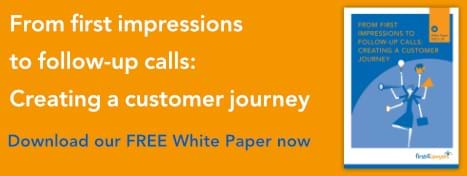April 2021 blog for Insurance Claims

As an industry, there’s been a huge focus on customer experience over the last few years, and rightly so. As service providers, whether insurers or law firms, our reputations hang on the quality of the advice we provide as well as ensuring high levels of customer service.
Now Google also wants to make sure that users have a more positive experience and this is the focus behind their latest algorithm change, page experience.
Page experience will come into effect from May and will quite significantly change how Google ranks search results by placing a far greater emphasis on user experience.
Normally, Google doesn’t take the time to publicise algorithm updates as it does them tens if not hundreds of times a year. However, these are often small adjustments which have no discernible impact to website owners or users. So, the announcement, nearly a year ago, should have been prompt enough to cause website designers and marketers to start looking into what these changes might be, and their impact.
How will the changes impact websites?
Unusually not only did Google give notice of the changes it has also been very clear in communicating what the algorithm will look at, and that is a term known as Core Web Vitals.
Core Web Vitals cover three main areas and whilst the terms sound horrendously technical, what they actually cover is very basic, so bear with me:
Largest Contentful Paint (LCP)
This is the term Google gives to how long it takes for the largest block of text or image to appear on the page. This is key as often homepages have large blocks of text, videos or image carousels. To achieve a good score Google looks for this to be 2.5 seconds or less. The easiest way to speed this up is to simply remove them, but that can destroy the design of a site, so instead you may want to look at these file sizes and see if they can be compressed.
First Input Delay (FID)
This describes how long it takes for a website to process a user’s interactions. So, in other words, if a user clicks on a link or a tab, how long does the website take to fulfil that request. Google’s benchmark of whether this is good, is if it takes less than 100 milliseconds. This may seem like an incredibly high benchmark, but the reality of websites is that speed is an essential factor. Sitting in front of a blank or unresponsive screen for two seconds can feel like an eternity.
Cumulative Layout Shift (CLS)
From a user experience point of view, this is probably the most irritating of all. If you’ve ever been on a website, gone to click on a link but the page has shifted up or down and meant you’ve clicked on another link – you will know the frustration! The main culprits for causing this are slow loading text, images or videos and it has the biggest impact on a user’s page experience. To be classed as ‘good’ Google expects your page to load and be stable in 1 second or under. Again, reflecting the high standards expected of todays’ websites.
With the roll out scheduled for next month, and having had twelve months’ notice most marketers and web teams should be on top of this. However, it may also feel like another thing that needs to be sorted, on the back of a year when businesses have had to adjust and adapt to so much already. This change though really does reap rewards for businesses. We all know from personal experience how frustrating it can be to click through to sites from a Google search and to wait while it slowly loads, or appears to load and then stalls, or worse the content jumps around the page as it loads.
Customers are savvy online shoppers and expect high quality websites in terms of performance and quality of information. If your website doesn’t load, is slow or clunky to use or doesn’t display the information they’re looking for – they are literally just a click away from a site that does. It’s simultaneously never been easier to win or lose initial contact from potential customers.
Embracing these changes will help to keep your business sharp, connected and well placed on Google.


